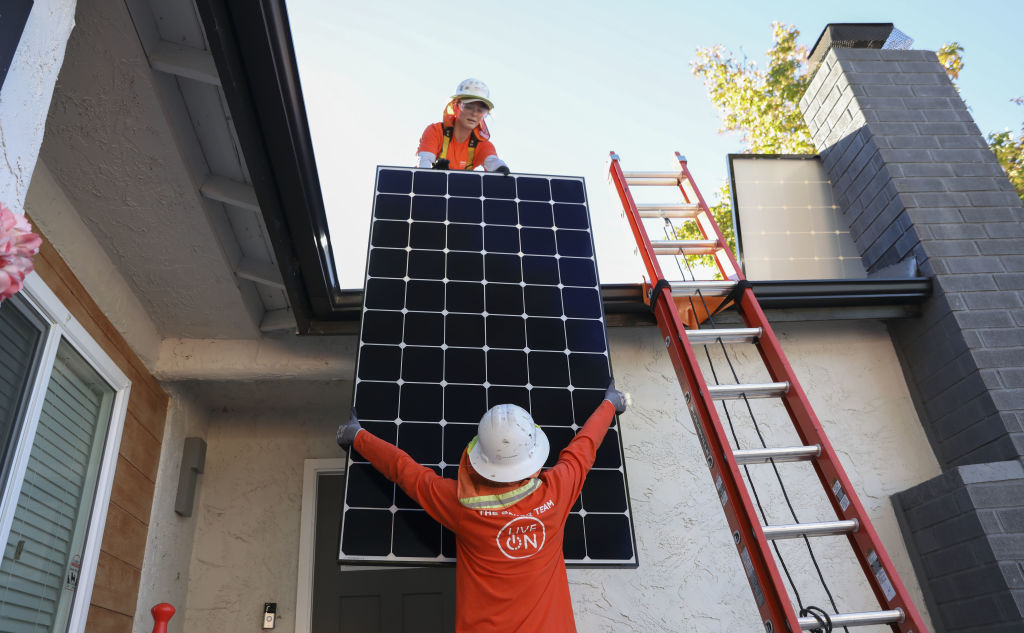
(To get this story in your inbox, subscribe to the TIME CO2 Leadership Report newsletter here.)
The private sector role in addressing climate change has evolved over the years with some players enthusiastically jumping in and others standing on the sidelines largely ignoring it. But that latter position has become increasingly unfeasible. This year, expect climate change—and its effects and the policies meant to address it—to grow in relevance across the private sector.
Here are six things I’m watching this year at the intersection of climate, business, and finance.
The U.S. election
Any consideration of this year in climate—for the private sector or otherwise—should begin with the U.S. presidential election. Electing Donald Trump president would turn the U.S., the world’s second-largest largest emitter, its largest economy, and its largest market, into a significant impediment to progress on climate policy.
For the private sector, it would throw many corporate climate and decarbonization efforts into a state of uncertainty. The fate of federal tax incentives designed to spur clean energy would become a significant point of contention with some Republicans already pushing to repeal them. Even if they failed to repeal them in full, with control of Congress and the White House, Republicans could cap their funding or find other ways to chip around the edges. A Trump White House would also target the flurry of climate rules that the Biden Administration is racing to finish. This is easier said than done, and it would be wise to expect significant litigation on a range of regulations.
In short, behind the scenes, corporate lobbyists in Washington—not too long ago key Republican supporters—worry that a Trump win could mean chaos. Businesses should expect a lot of uncertainty, around which it’s hard to plan and invest. That’s a significant headwind given the hundreds of billions of dollars in capital expenditure companies have committed to advancing clean technology on the basis of those tax incentives and regulations.
Interest rates
Building capital-intensive clean energy projects typically relies on a significant amount of money financed either through debt or equity. Because of that, high interest rates last year led many project developers to reassess some of their growth plans. In the coming months, we’ll get a sense of whether those projects will move forward or get scrapped permanently. Perhaps the biggest thing that could clear the path for deployment: central banks lowering interest rates.
IRA implementation
The Biden Administration is working to define and in some cases finalize the rules of the road for a number of key provisions in the Inflation Reduction Act—everything from what hydrogen projects qualify for tax credits to what qualifies as a “foreign entity of concern.” These details will make a significant difference in how businesses invest in clean technology.
Climate disclosure
For years, companies keen to show their climate credentials have relied on a variety of voluntary regimes to disclose how climate change affects their business; companies less interested in climate change haven’t disclosed much at all. A new raft of rules are coming this year that will begin to level the playing field. The European Union’s Corporate Sustainability Reporting Directive mandates that some large companies begin collecting and reporting climate-related data this year for the first time. (U.S. businesses that do significant business in Europe are also affected). In California, following a law passed last year, regulators will get to work crafting new climate disclosure rules for companies doing business in the state. And, perhaps most significantly, the U.S. Securities and Exchange Commission is expected to release a final version of its own climate disclosure regulation.
Climate finance
Finding the money to deploy climate technologies in emerging markets will feature in international summits like the G20 this year as well as in global climate talks. The key challenge is making it affordable for developing countries—which face high interest rates—to raise the money to build out clean energy infrastructure. One possible solution that will be under discussion this year is known as blended finance . The approach combines money from governments, philanthropy, and other public institutions—so-called catalytic capital—with private sector money. The providers of catalytic capital take on additional risk or lower returns to catalyze enough private sector money to make projects viable. Expect to hear about blended finance at the spring and fall meetings of the International Monetary Fund, the G20 meetings, and COP29 in Baku.
Remaking of ESG
The backlash to ESG investing from culture warriors has led some of its biggest proponents to retreat—at least rhetorically. But it remains a space to watch. On the most basic level, returns from some of the biggest ESG funds suffered in 2022 as the tech stocks that make up a significant share of their value declined. Those poor returns—especially at a time when fossil fuel stocks boomed—made some question the sector. But tech stocks are rising again, and ESG funds are benefiting. At the same time, the discussion around climate discourse as well as more specific regulatory rules around the ESG label (see the ESG guidelines emerging from France) are narrowing what ESG even means.
More Must-Reads from TIME
- Donald Trump Is TIME's 2024 Person of the Year
- Why We Chose Trump as Person of the Year
- Is Intermittent Fasting Good or Bad for You?
- The 100 Must-Read Books of 2024
- The 20 Best Christmas TV Episodes
- Column: If Optimism Feels Ridiculous Now, Try Hope
- The Future of Climate Action Is Trade Policy
- Merle Bombardieri Is Helping People Make the Baby Decision
Write to Justin Worland at justin.worland@time.com